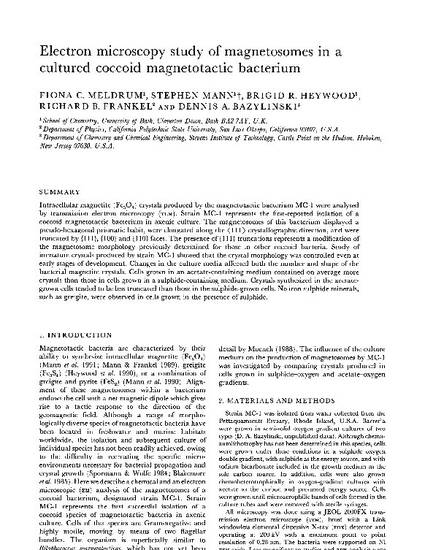
Intracellular magnetite (Fe3O4) crystals produced by the magnetotactic bacterium MC-1 were analyzed by transmission electron microscopy (TEM). Strain MC-1 represents the first-reported isolation of a coccoid magnetotactic bacterium in axenic culture. The magnetosomes of this bacterium displayed a pseudo-hexagonal prismatic habit, were elongated along the crystallographic direction, and were truncated by {111}, {100} and {110} faces. The presence of {111} truncations represents a modification of the magnetosome morphology previously determined for those in other coccoid bacteria. Study of immature crystals produced by strain MC-1 showed that the crystal morphology was controlled even at early stages of development. Changes in the culture media affected both the number and shape of the bacterial magnetite crystals. Cells grown in an acetate-containing medium contained on average more crystals than those in cells grown in a sulphide-containing medium. Crystals synthesized in the acetate-grown cells tended to be less truncated than those in the sulphide-grown cells. No iron sulphide minerals, such as greigite, were observed in cells grown in the presence of sulphide.
Available at: http://works.bepress.com/rfrankel/78/
